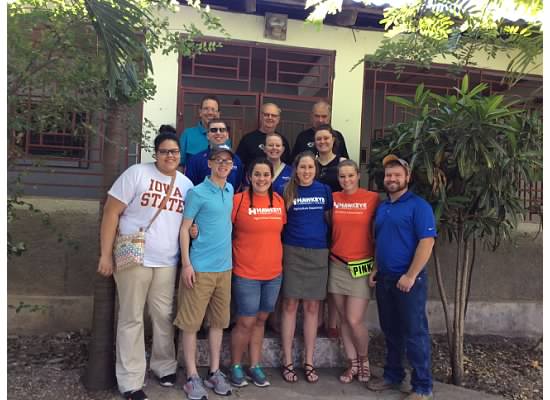Cotton Production in Brazil
I come from a corn and soybean background, and so when we spent almost a whole day on cotton production farm, I was blown away. If you're interested in learning more about cotton production in Brazil, then continue on reading.
The farm that we toured is owned by two men from Japan, but Venice is their agronomists that gave us the tour. Cotton grows for 6 months. On top of cotton, they grow corn for a 2nd crop, soybeans and sorghum. They make cotton seed for Bayer there also. There newest variety is Fiber max GMT 983. The worst insect for cotton is caterpillars, and with new technology they have created GLT Glyphosate roundup ready. Another treatment that they use a lot in Brazil, and we also use it too, is called Liberty Link. The glyphosate roundup ready cotton seed is pretty pricey, it cost roughly $500-600 per bag for this new variety. Though one thing it has going for it is, is 1 bag will plant 2 Hectare acres, which is equivalent to 5 acres here. Another great thing about this new variety is the fact that they can cut down on spraying passes and cost, because of the resistance. So, overall the $600 bag is worth it in the long run. Other popular insects they have to deal with a lot is spider mites, stink bug and whiteflies. Whiteflies can take out the sugar in cotton in beginning stages and the plant will stop growing. Nymphs can turn plant into fungus and ruin crop completely. They make 6 to 8 spraying passes per crop. Typically they use 38 different chemicals when it comes to spraying.
In Brazil they are growing at least two crops per year, and some places are getting 3 crops in one field per year. At this farm they grow soybeans first, then plant cotton. A popular disease in cotton is called, Dumping Off. Its a soil disease caused by fungus. This disease can damage the entire field within 24 to 48 hours. Another popular disease is called, Humalatin, which causes the plant to only have 10 stems, and then it stops growing after that. Micronutrients are very important to cotton, they put on zinc, manganese and chloride with foliar application. They apply 2 applications of UREA. The fruit part of the cotton plant they call apples. The flower part goes through two different color stages, yellow means not ready for new flower and pink signals ready for new flower. Each flower has 10 seeds in each section, and typically 5 sections in each flower. Cost around $600-700 A.I.’s to produce 1 cotton hectare acre. They make the cotton in bales which weigh around 26,500 pounds.
Rocks aren't a problem in their area. They no till everything. Also learned that just like here, their most popular brands are Case IH, John Deere and New Holland. The soils in Brazil are red because they are low in OM and high in Iron.
I hope I was able to teach you a little bit about what cotton production is like in Brazil.


















